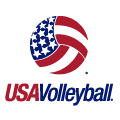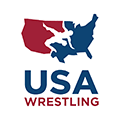Guide to College Wrestling Weight Classes and How to Wrestle in College

What does it take to wrestle in college? It’s the question every student-athlete asks as they begin their recruiting journey. The answer: it depends. Each division comes with its own set of specific criteria and desired skills. But knowing what coaches are looking for—from Division 1 to NAIA—will help recruits in their search for the best college fit. This section details the wrestling recruiting guidelines at every level.
Quick Links
What to know about college wrestling weight classes
How many weight classes are there in college wrestling? Can I move on to the college level? There’s no denying it: the transition from high school to college sports is tough. Student-athletes go from being the very best in their class to constantly competing for a spot.
What are the weight classes in wrestling?
For boys’ competition, there are 14 high school weight classes established the NFHS: 106, 113, 120, 126, 132, 138, 144, 150, 157, 165, 175, 190, 215, 285 and 10 college wrestling weight classes established by the NCAA: 125, 133, 141, 149, 157, 165, 174, 184, 197 and heavyweight (183 to 285). For girls’ competition, there are 14 high school weight classes established by the NFHS: 100, 105, 110, 115, 120, 125, 130, 135, 140, 145, 155, 170, 190, 235.
Once the NCAA determines a wrestler’s weight class, the athlete can’t compete below it and can only compete one level above it. This rule serves as a safety measure to prevent wrestlers from dropping too much weight too quickly. In fact, some schools require extensive weight certifications that include body composition and hydration tests. But it also means that college coaches need to be strategic in their recruiting methods.
To predict a student-athlete’s collegiate weight class, coaches look at how the recruit has competed over the course of a few years. For example, if a high school wrestler started at 106 his freshman year, then competed at 113 his sophomore year, and netted out at 120 his senior year, the coach will note this athlete’s gradual growth and most likely recruit him for 125. On the other hand, student-athletes who make major jumps from year to year could be considered for higher weight classes than they’re currently competing. Some wrestling coaches may even go as far as to look at the recruit’s parents to gauge where they’ll end up. But as a general rule of thumb, college coaches try to predict how much higher a recruit will go in weight classes, not lower.
Even so, many college wrestlers continue to develop and get stronger after high school, which is why redshirting is more common in wrestling than other sports. Redshirting means the athlete can’t compete for one academic year, but they can still participate in practice. By doing so, they gain a fifth year of eligibility. This is a good solution for some college wrestlers who are preparing to jump weight classes, or for freshmen who are still adapting to collegiate competition.
Another important consideration is the distribution of college wrestling weight classes. There’s an average of 29 wrestlers on a team, but they aren’t always distributed evenly. Naturally, many college wrestlers fall somewhere right in the middle—between 149 and 174. So, coaches might only have one or two wrestlers on each end of the spectrum.
But the easiest way to determine a coach’s recruiting needs is by looking at their roster. How many wrestlers are in your desired college wrestling weight class? Are they upperclassmen who are getting ready to graduate? Taking time to study a team’s roster can provide insight into a coach’s recruiting strategy and help you gain a competitive edge.
Related Articles
- Read our new articles on College Wrestling
What do coaches look at when evaluating college wrestling recruits?
When evaluating recruits, college coaches look closely at technical development. They don’t want to bring on someone who needs to be taught the fundamentals. Instead, they seek out technically sound wrestlers who have potential to improve. But measuring potential can be a tough task. One way they accomplish this is by seeing how the recruit performs against high quality athletes. In college, student-athletes will be competing against the top wrestlers in the nation and it’s important for coaches to see if they can hold their own. Additionally, they might follow a wrestler’s performance over time. Recruits who continue to rank higher year-over-year show coaches they haven’t yet reached their potential. But keep in mind that when it comes to being offered a scholarship, there’s so much more to it than athleticism.
College coaches want to recruit student-athletes with a strong academic history, leadership qualities and mental toughness. If it boils down to picking between two recruits, coaches will compare transcripts and even network with high school coaches to learn more about a recruit’s character. They’re looking for someone who will be a good fit athletically, academically and culturally.
Wrestling recruiting guidelines by division level
| Tier 1 | Tier 2 | Tier 3 | Tier 4 | |
| Division 1 | High Division 2, 3, and NAIA | Division 2, 3, and NAIA | Low NAIA and Junior College | |
| High School Experience | Multiple time State champion and national tournament placement. High national ranking on sites like FloWrestling or InterMat Wrestling. Top 1-5% of high school wrestlers are recruited by D1 schools. | D2: High State placement. Nationally ranked on sites like FloWrestling or InterMat Wrestling. D3 and NAIA: State tournament experience. Winning Regional and District Titles. | 3-year Varsity experience. High District and Regional placements. Off-season wrestling is encouraged. | At least 2 years Varsity experience. |
| Wrestling Skills | Wrestles off-season at a competitive club. Attends FS/GR National Events, Super 32 and NHSCA Nationals. Achieves high placement(s) at those events. | Belongs to off-season club program. Attends state championship events and achieves successful results. Attends National level events. | Pre-season club wrestling is a plus. Attends combines and camps to gain exposure with college programs. | Attends combines camps and clinics. Isn’t a member of an off-season club due to multiple sport obligations. |
Wrestling coaches tend to be selective when offering scholarships. It’s important for recruits to understand the criteria coaches are looking for as well as the experience at each division level. Knowing their best college fit—from athletics to academics to campus life—will increase their chances of getting recruited. Here are the wrestling recruiting guidelines at every level:
- NCAA Division 1: One percent of high school wrestlers will go on to compete at the Division 1 level. These student-athletes aren’t just the best at their school; they are the top high school wrestlers in the country and oftentimes rank in the top 100 nationally. They consistently win and place at major tournaments and wrestle in the offseason at a competitive club. Division 1 competition is fierce. Athletes are expected to train year-round, on weekends and during holidays, making free time extremely limited.
- NCAA Division 2: This tier of student-athletes may have placed at the state or regional level. They’ve won several tournaments, have experience in Freestyle and Greco and have competed at major tournaments. Opportunity at this level is limited as Division 2 has the fewest number of wrestling programs. Coaches look for recruits who are committed both in the gym and in the classroom. Division 2 offers more balance and free time to concentrate on academics.
- NCAA Division 3: These athletes probably started on Varsity, won high school tournaments and placed at State. Top Division 3 programs can take on Division 1 and 2 wrestlers. Though, this level offers the most well-rounded experience of all the NCAA divisions, allocating more time for study and internships. Therefore, student-athletes might find that Division 3 coaches focus more closely on recruits who show interest in their school outside of athletics. Even though athletic scholarships are not available at this level, coaches can work with the admissions department to create competitive scholarship packages composed of need-based aid, merit scholarships and academic scholarships.
- NAIA: Made up of mostly smaller, private universities, the NAIA awards close to $500 million in athletic scholarships every year and shouldn’t be overlooked. Top NAIA programs are similar to Division 3 schools and provide student-athletes with a balanced college experience. Lower NAIA schools look for wrestlers with high school Varsity experience who placed at tournaments.
- Junior college: For some athletes, junior college is the best path to develop their skills and work toward a four-year college roster spot. They can stay close to home, earn college credit and focus on their training.
List of major wrestling tournaments and their locations
The best way for college coaches to evaluate wrestling recruits is to watch them compete in-person at tournaments. Here, student-athletes can see how they measure up against the top recruits in the nation, and college coaches can assess a recruit’s athletic ability and demeanor during a tough match. This list of popular tournaments attracts high-level recruits and several college coaches:
- Cadet and Junior Nationals, Fargo ND – July (Freestyle and Greco Roman)
- Super 32, Greensboro, NC – October (Folkstyle)
- Pre-Season Nationals, Des Moines, IA – October (Folkstyle)
- NHSCA’s, Virginia Beach, VA – April (Folkstyle)
- US Nationals, Las Vegas, NV – April (Freestyle and Greco Roman)
- Fila Cadet World Team Trials, Akron, OH – May (Freestyle and Greco Roman)
- Disney Duals, Orlando, FL – June (Folkstyle)
- Cadet and Junior National Duals, Locations vary, but Oklahoma has been the most current destination – June (Freestyle and Greco Roman)
- Ironman Invitational, Cuyahoga, OH –December (Folkstyle)
- Beast of the East, Newark, DE – December (Folkstyle)
- Reno Tournament of Champions, Reno, NV – December (Folkstyle)
- Powerade Christmas Tournament, Canonsburg, PA – December (Folkstyle)
- FloNational, Indiana, PA – April (Freestyle and Greco Roman)
How to wrestle in college: Tips for how to get recruited for college wrestling
You’ll quickly learn that recruiting isn’t a linear, clear-cut process. You could be nearing the end of your recruiting journey with one coach, while simultaneously just beginning it with another. But one thing that makes the ups and downs of the process easier is knowing what steps you should take to create a communication strategy and market yourself. Here are five things that all successful recruits do to secure a scholarship:
- Research and build a target list. Don’t waste time emailing coaches at programs that aren’t a good match. Look at the team’s roster to see how you qualify athletically and talk to your high school counselor to learn more about the school’s academic requirements. Then, jot down 10 to 15 target schools that are realistic options for you.
- Create an online profile. Think about it like an influencer—you need a platform to get noticed. Make it easy for coaches to see your highlight video, key stats, contact information and academic history by creating an online profile they can access.
- Meet academic requirements. The NCAA Eligibility Center determines the academic eligibility and amateur status for all NCAA Division 1 and Division 2 athletes. Understand the requirements so you can stay on track.
- Contact coaches—and follow up. Student-athletes should never wait to simply “be discovered.” Instead, they need to proactively reach out to college coaches. Start by sending an introductory email that includes your online profile, highlight video, academic information, outstanding athletic achievements, and personal interest in the program. Then continue to follow up with noteworthy updates throughout the year.
- Get exposure. Wrestling tournaments are an opportunity for student-athletes to test their skills against top talent from across the country and compete in front of college coaches. If recruits time it right and contact coaches before they attend a tournament or camp, they can improve their odds of being evaluated in-person. This is especially helpful for student-athletes who live in the Southwest and West Coasts where there are fewer college wrestling programs.
- Don’t give up. If you’re an upperclassman who isn’t being actively recruited by college coaches, rework your target list. Consider new opportunities, take unofficial visits and use your high school coach to identify programs.
When does college wrestling recruiting start?
The NCAA regulates when college coaches can reach out to student-athletes. Generally, wrestling coaches can contact recruits beginning June 15 after their sophomore year. They can call, email, text and make verbal offers at this time. NCAA Division 1 and top Division 2 programs usually set the pace for the wrestling recruiting timeline. Student-athletes will find that Division 3 and NAIA schools become more active during junior and senior year when ACT and SAT scores become available.
However, coaches begin building their list of interested recruits even earlier. That’s why the more proactive a student-athlete is in their recruiting journey—by researching schools, creating a highlight video, emailing coaches—the better their chances of getting recruited.
How to contact college wrestling coaches
When student-athletes think about the recruiting process, they picture the more glamorous moments—like being evaluated at a tournament or going on an official visit—and tend to skip over the more tedious details, such as emailing coaches.
But there’s no way around it. To get on a coach’s radar, athletes need to proactively contact them. Specifically, they need to craft an introductory email, which serves two purposes: to get an initial evaluation and establish a relationship with the coach.
- Let’s start with the subject line. To stand out, it shouldn’t be generic, such as “Top wrestling recruit,” and must be tailored to the school instead. For example, a recruit might want to include their GPA and test score in the subject line for high academic colleges, while highlighting championships to Division 1 schools.
- Then, the email copy needs to include their personal interest in the program, graduation year, high school information, highlight film, academic information, relevant wrestling stats and accolades, as well as contact information. We can’t reiterate this enough: never copy and paste emails to college coaches. Generic emails are almost always overlooked.
- Lastly, remember to follow up. Whenever there is a noteworthy update to share, like a new ACT or SAT score or athletic achievement, email the college coach again to touch base. Because if they missed your first email (and coaches tend to be pretty busy), following up can help keep you top of mind.
How many wrestlers move on to college?
There are 245,564 high school wrestlers. Of that number, 7,218—or 2.9 percent—go on to compete in the NCAA and 1,806—less than one percent—move on to the NAIA. Only one percent compete in NCAA Division 1 where there are 78 teams; less than one percent compete at the NCAA Division 2 level, which has the fewest teams at 64 programs, and the largest percentage—3.1 percent—compete at NCAA Division 3 with 109 teams.
















